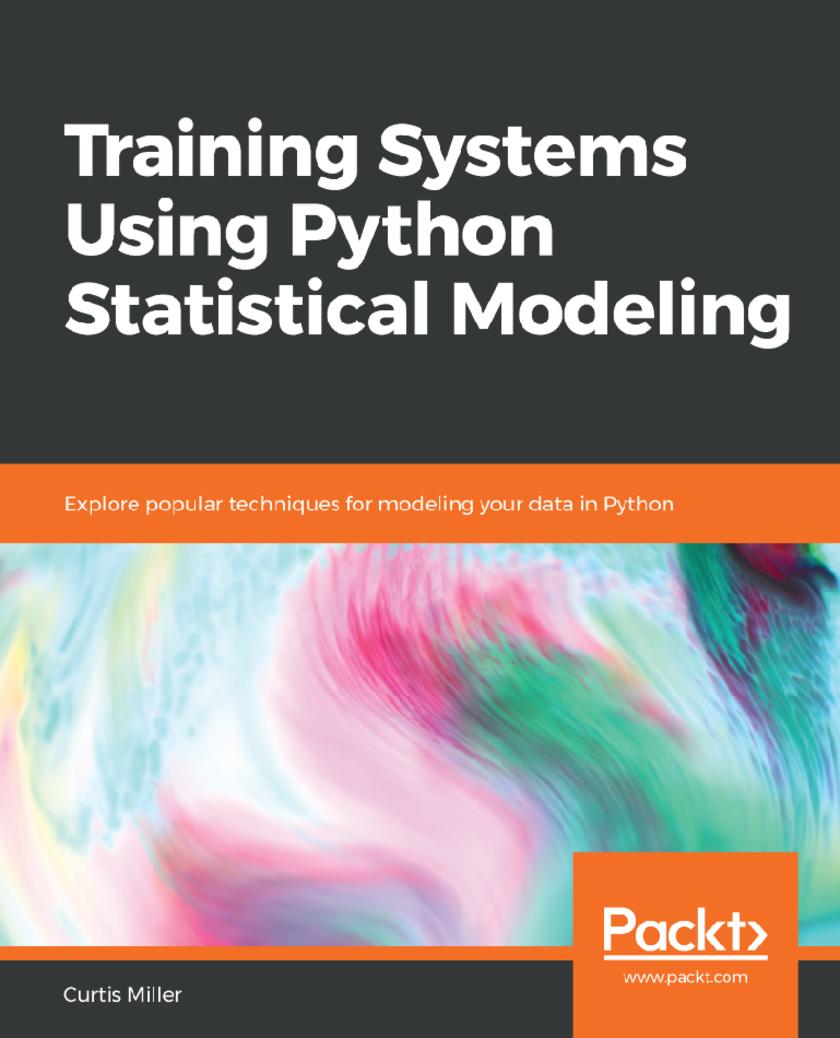
Training Systems Using Python Statistical Modeling
¥62.12
Leverage the power of Python and statistical modeling techniques for building accurate predictive models Key Features * Get introduced to Python's rich suite of libraries for statistical modeling * Implement regression, clustering and train neural networks from scratch * Includes real-world examples on training end-to-end machine learning systems in Python Book Description Python's ease of use and multi-purpose nature has led it to become the choice of tool for many data scientists and machine learning developers today. Its rich libraries are widely used for data analysis, and more importantly, for building state-of-the-art predictive models. This book takes you through an exciting journey, of using these libraries to implement effective statistical models for predictive analytics. You’ll start by diving into classical statistical analysis, where you will learn to compute descriptive statistics using pandas. You will look at supervised learning, where you will explore the principles of machine learning and train different machine learning models from scratch. You will also work with binary prediction models, such as data classification using k-nearest neighbors, decision trees, and random forests. This book also covers algorithms for regression analysis, such as ridge and lasso regression, and their implementation in Python. You will also learn how neural networks can be trained and deployed for more accurate predictions, and which Python libraries can be used to implement them. By the end of this book, you will have all the knowledge you need to design, build, and deploy enterprise-grade statistical models for machine learning using Python and its rich ecosystem of libraries for predictive analytics. What you will learn * Understand the importance of statistical modeling * Learn about the various Python packages for statistical analysis * Implement algorithms such as Naive Bayes, random forests, and more * Build predictive models from scratch using Python's scikit-learn library * Implement regression analysis and clustering * Learn how to train a neural network in Python Who this book is for If you are a data scientist, a statistician or a machine learning developer looking to train and deploy effective machine learning models using popular statistical techniques, then this book is for you. Knowledge of Python programming is required to get the most out of this book.
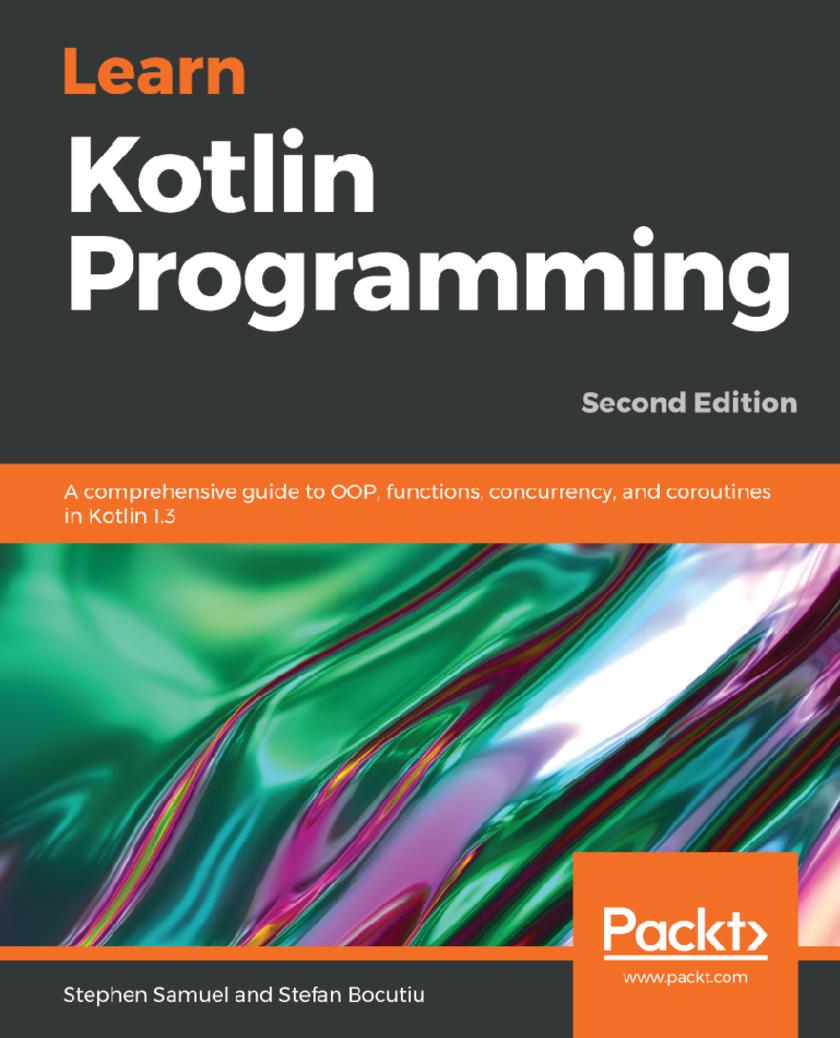
Learn Kotlin Programming
¥62.12
Delve into the world of Kotlin and learn to build powerful Android and web applications Key Features * Learn the fundamentals of Kotlin to write high-quality code * Test and debug your applications with the different unit testing frameworks in Kotlin * Explore Kotlin's interesting features such as null safety, reflection, and annotations Book Description Kotlin is a general-purpose programming language used for developing cross-platform applications. Complete with a comprehensive introduction and projects covering the full set of Kotlin programming features, this book will take you through the fundamentals of Kotlin and get you up to speed in no time. Learn Kotlin Programming covers the installation, tools, and how to write basic programs in Kotlin. You'll learn how to implement object-oriented programming in Kotlin and easily reuse your program or parts of it. The book explains DSL construction, serialization, null safety aspects, and type parameterization to help you build robust apps. You'll learn how to destructure expressions and write your own. You'll then get to grips with building scalable apps by exploring advanced topics such as testing, concurrency, microservices, coroutines, and Kotlin DSL builders. Furthermore, you'll be introduced to the kotlinx.serialization framework, which is used to persist objects in JSON, Protobuf, and other formats. By the end of this book, you'll be well versed with all the new features in Kotlin and will be able to build robust applications skillfully. What you will learn * Explore the latest Kotlin features in order to write structured and readable object-oriented code * Get to grips with using lambdas and higher-order functions * Write unit tests and integrate Kotlin with Java code * Create real-world apps in Kotlin in the microservices style * Use Kotlin extensions with the Java collections library * Uncover destructuring expressions and find out how to write your own * Understand how Java-nullable code can be integrated with Kotlin features Who this book is for If you’re a beginner or intermediate programmer who wants to learn Kotlin to build applications, this book is for you. You’ll also find this book useful if you’re a Java developer interested in switching to Kotlin.
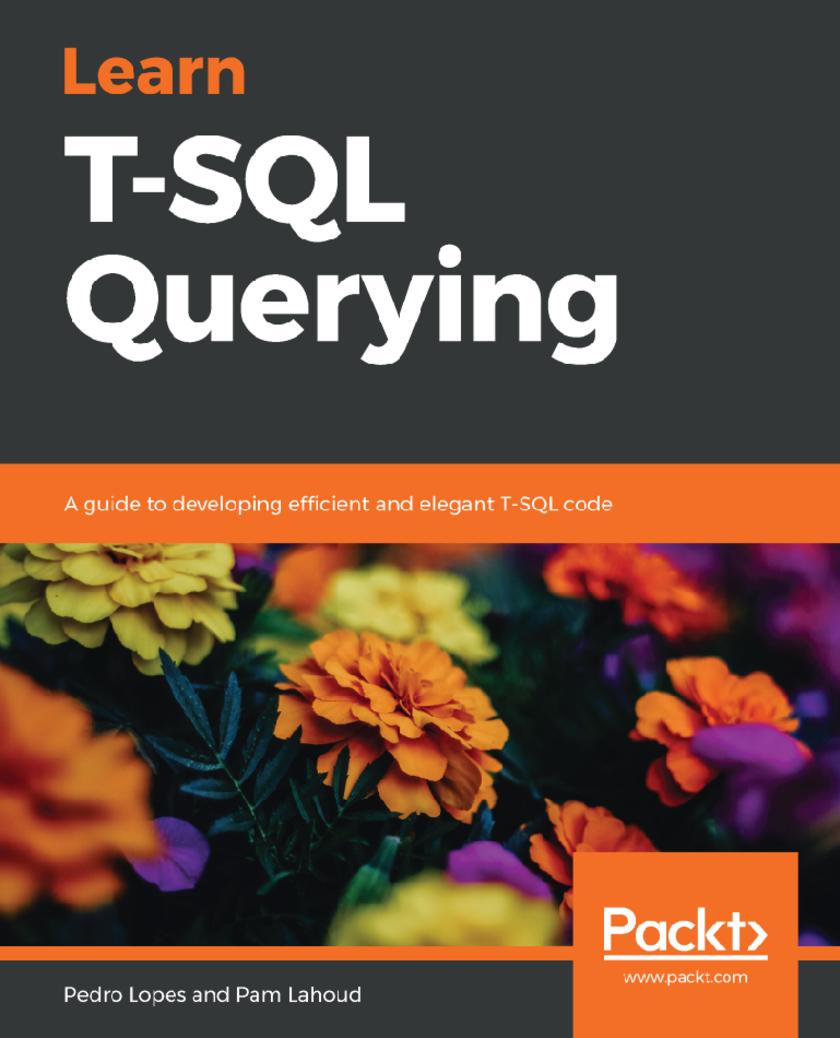
Learn T-SQL Querying
¥70.84
Troubleshoot query performance issues, identify anti-patterns in code, and write efficient T-SQL queries Key Features * Discover T-SQL functionalities and services that help you interact with relational databases * Understand the roles, tasks and responsibilities of a T-SQL developer * Explore solutions for carrying out database querying tasks, database administration, and troubleshooting Book Description Transact-SQL (T-SQL) is Microsoft's proprietary extension to the SQL language that is used with Microsoft SQL Server and Azure SQL Database. This book will be a useful guide to learning the art of writing efficient T-SQL code in modern SQL Server versions, as well as the Azure SQL Database. The book will get you started with query processing fundamentals to help you write powerful, performant T-SQL queries. You will then focus on query execution plans and learn how to leverage them for troubleshooting. In the later chapters, you will learn how to identify various T-SQL patterns and anti-patterns. This will help you analyze execution plans to gain insights into current performance, and determine whether or not a query is scalable. You will also learn to build diagnostic queries using dynamic management views (DMVs) and dynamic management functions (DMFs) to address various challenges in T-SQL execution. Next, you will study how to leverage the built-in tools of SQL Server to shorten the time taken to address query performance and scalability issues. In the concluding chapters, the book will guide you through implementing various features, such as Extended Events, Query Store, and Query Tuning Assistant using hands-on examples. By the end of this book, you will have the skills to determine query performance bottlenecks, avoid pitfalls, and discover the anti-patterns in use. Foreword by Conor Cunningham, Partner Architect – SQL Server and Azure SQL – Microsoft What you will learn * Use Query Store to understand and easily change query performance * Recognize and eliminate bottlenecks that lead to slow performance * Deploy quick fixes and long-term solutions to improve query performance * Implement best practices to minimize performance risk using T-SQL * Achieve optimal performance by ensuring careful query and index design * Use the latest performance optimization features in SQL Server 2017 and SQL Server 2019 * Protect query performance during upgrades to newer versions of SQL Server Who this book is for This book is for database administrators, database developers, data analysts, data scientists, and T-SQL practitioners who want to get started with writing T-SQL code and troubleshooting query performance issues, through the help of practical examples. Previous knowledge of T-SQL querying is not required to get started on this book.
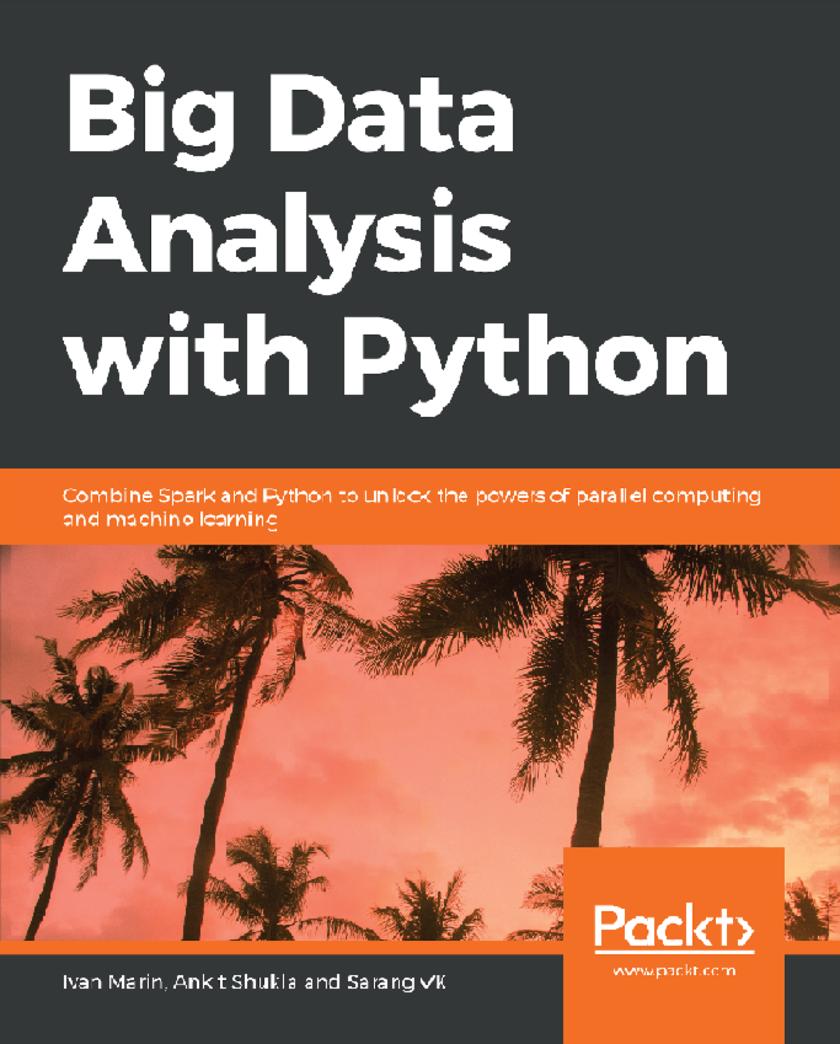
Big Data Analysis with Python
¥53.40
Get to grips with processing large volumes of data and presenting it as engaging, interactive insights using Spark and Python. Key Features * Get a hands-on, fast-paced introduction to the Python data science stack * Explore ways to create useful metrics and statistics from large datasets * Create detailed analysis reports with real-world data Book Description Processing big data in real time is challenging due to scalability, information inconsistency, and fault tolerance. Big Data Analysis with Python teaches you how to use tools that can control this data avalanche for you. With this book, you'll learn practical techniques to aggregate data into useful dimensions for posterior analysis, extract statistical measurements, and transform datasets into features for other systems. The book begins with an introduction to data manipulation in Python using pandas. You'll then get familiar with statistical analysis and plotting techniques. With multiple hands-on activities in store, you'll be able to analyze data that is distributed on several computers by using Dask. As you progress, you'll study how to aggregate data for plots when the entire data cannot be accommodated in memory. You'll also explore Hadoop (HDFS and YARN), which will help you tackle larger datasets. The book also covers Spark and explains how it interacts with other tools. By the end of this book, you'll be able to bootstrap your own Python environment, process large files, and manipulate data to generate statistics, metrics, and graphs. What you will learn * Use Python to read and transform data into different formats * Generate basic statistics and metrics using data on disk * Work with computing tasks distributed over a cluster * Convert data from various sources into storage or querying formats * Prepare data for statistical analysis, visualization, and machine learning * Present data in the form of effective visuals Who this book is for Big Data Analysis with Python is designed for Python developers, data analysts, and data scientists who want to get hands-on with methods to control data and transform it into impactful insights. Basic knowledge of statistical measurements and relational databases will help you to understand various concepts explained in this book.
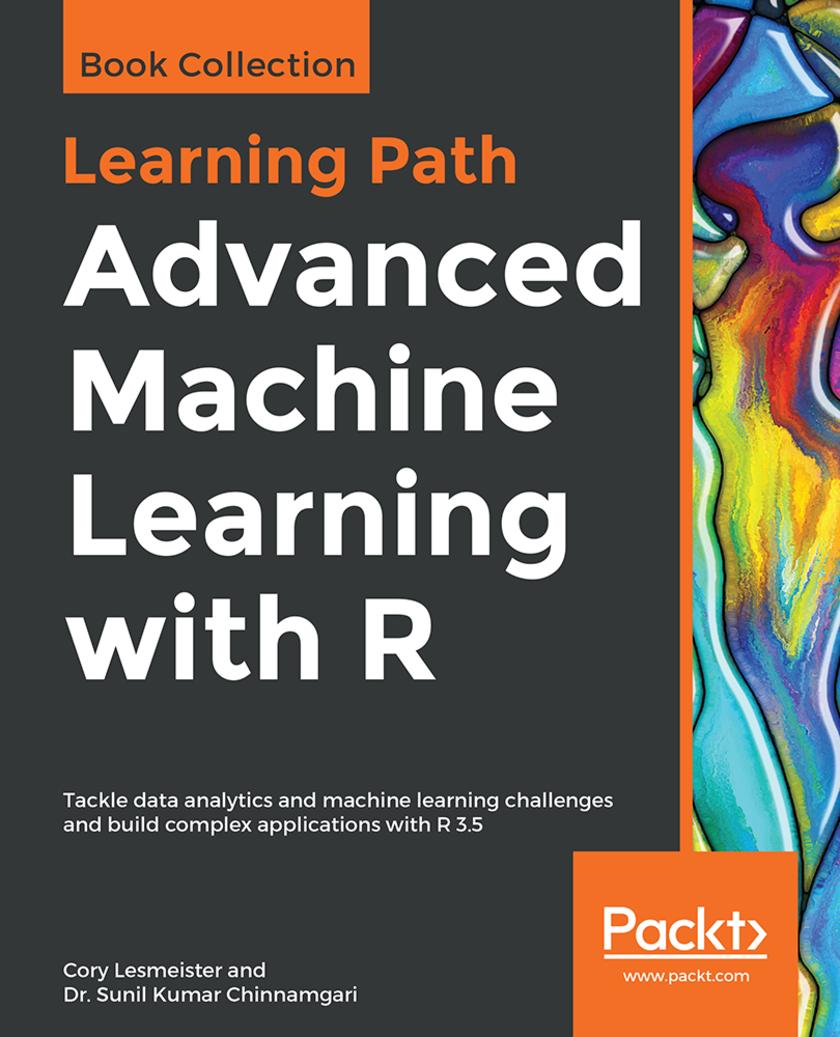
Advanced Machine Learning with R
¥88.28
Master machine learning techniques with real-world projects that interface TensorFlow with R, H2O, MXNet, and other languages Key Features * Gain expertise in machine learning, deep learning and other techniques * Build intelligent end-to-end projects for finance, social media, and a variety of domains * Implement multi-class classification, regression, and clustering Book Description R is one of the most popular languages when it comes to exploring the mathematical side of machine learning and easily performing computational statistics. This Learning Path shows you how to leverage the R ecosystem to build efficient machine learning applications that carry out intelligent tasks within your organization. You'll tackle realistic projects such as building powerful machine learning models with ensembles to predict employee attrition. You'll explore different clustering techniques to segment customers using wholesale data and use TensorFlow and Keras-R for performing advanced computations. You’ll also be introduced to reinforcement learning along with its various use cases and models. Additionally, it shows you how some of these black-box models can be diagnosed and understood. By the end of this Learning Path, you’ll be equipped with the skills you need to deploy machine learning techniques in your own projects. This Learning Path includes content from the following Packt products: * R Machine Learning Projects by Dr. Sunil Kumar Chinnamgari * Mastering Machine Learning with R - Third Edition by Cory Lesmeister What you will learn * Develop a joke recommendation engine to recommend jokes that match users’ tastes * Build autoencoders for credit card fraud detection * Work with image recognition and convolutional neural networks * Make predictions for casino slot machine using reinforcement learning * Implement NLP techniques for sentiment analysis and customer segmentation * Produce simple and effective data visualizations for improved insights * Use NLP to extract insights for text * Implement tree-based classifiers including random forest and boosted tree Who this book is for If you are a data analyst, data scientist, or machine learning developer this is an ideal Learning Path for you. Each project will help you test your skills in implementing machine learning algorithms and techniques. A basic understanding of machine learning and working knowledge of R programming is necessary to get the most out of this Learning Path.
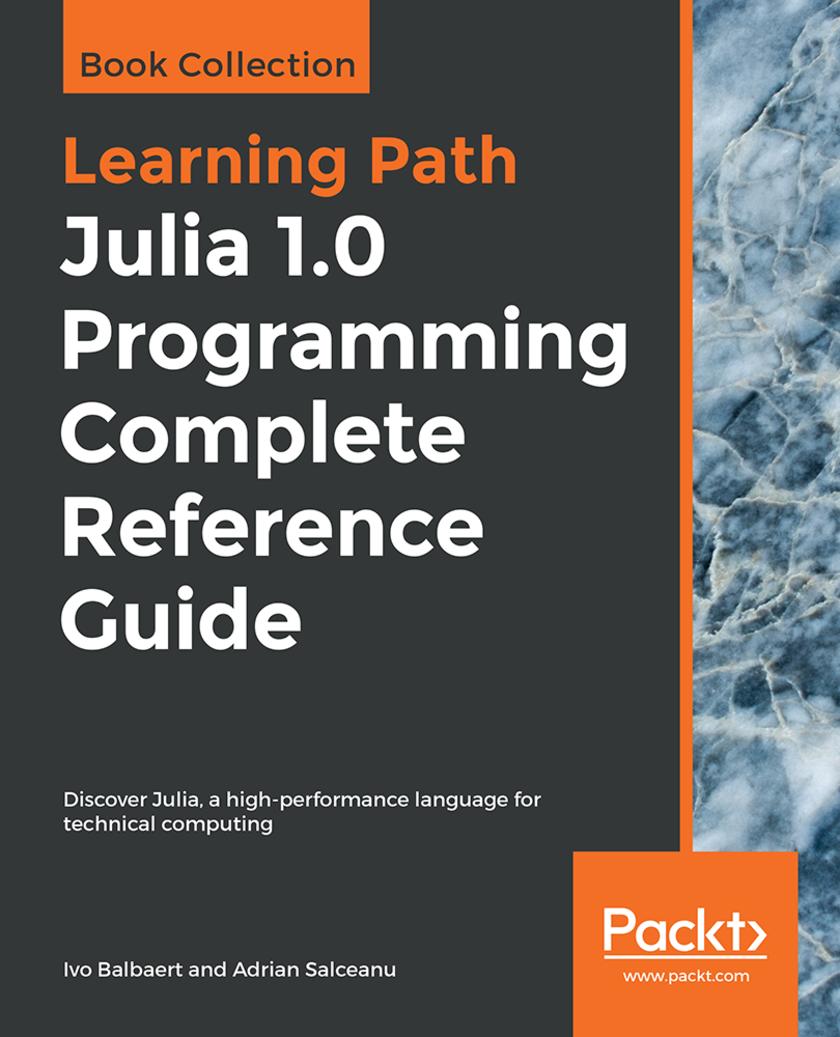
Julia 1.0 Programming Complete Reference Guide
¥88.28
Learn dynamic programming with Julia to build apps for data analysis, visualization, machine learning, and the web Key Features * Leverage Julia's high speed and efficiency to build fast, efficient applications * Perform supervised and unsupervised machine learning and time series analysis * Tackle problems concurrently and in a distributed environment Book Description Julia offers the high productivity and ease of use of Python and R with the lightning-fast speed of C++. There’s never been a better time to learn this language, thanks to its large-scale adoption across a wide range of domains, including fintech, biotech and artificial intelligence (AI). You will begin by learning how to set up a running Julia platform, before exploring its various built-in types. This Learning Path walks you through two important collection types: arrays and matrices. You’ll be taken through how type conversions and promotions work, and in further chapters you'll study how Julia interacts with operating systems and other languages. You’ll also learn about the use of macros, what makes Julia suitable for numerical and scientific computing, and how to run external programs. Once you have grasped the basics, this Learning Path goes on to how to analyze the Iris dataset using DataFrames. While building a web scraper and a web app, you’ll explore the use of functions, methods, and multiple dispatches. In the final chapters, you'll delve into machine learning, where you'll build a book recommender system. By the end of this Learning Path, you’ll be well versed with Julia and have the skills you need to leverage its high speed and efficiency for your applications. This Learning Path includes content from the following Packt products: * Julia 1.0 Programming - Second Edition by Ivo Balbaert * Julia Programming Projects by Adrian Salceanu What you will learn * Create your own types to extend the built-in type system * Visualize your data in Julia with plotting packages * Explore the use of built-in macros for testing and debugging * Integrate Julia with other languages such as C, Python, and MATLAB * Analyze and manipulate datasets using Julia and DataFrames * Develop and run a web app using Julia and the HTTP package * Build a recommendation system using supervised machine learning Who this book is for If you are a statistician or data scientist who wants a quick course in the Julia programming language while building big data applications, this Learning Path is for you. Basic knowledge of mathematics and programming is a must.
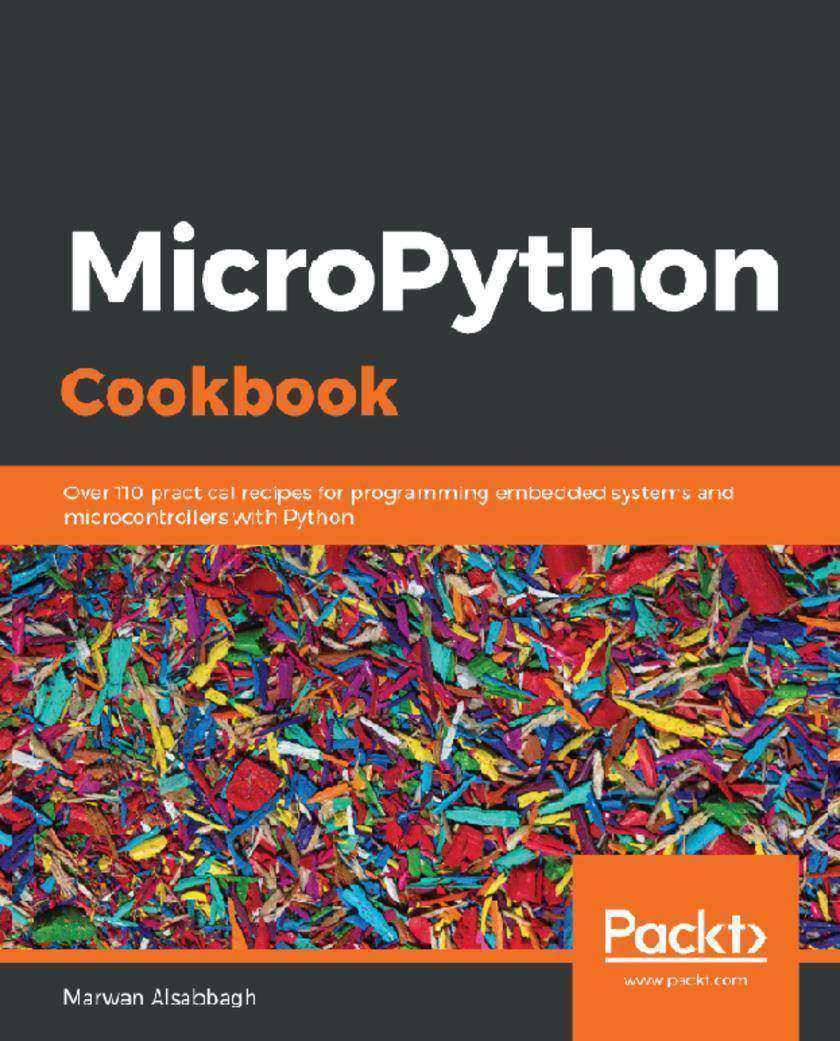
MicroPython Cookbook
¥70.84
Learn how you can control LEDs, make music, and read sensor data using popular microcontrollers such as Adafruit Circuit Playground, ESP8266, and the BBC micro:bit Key Features * Load and execute your first program with MicroPython * Program an IoT device to retrieve weather data using a RESTful API * Get to grips with integrating hardware, programming, and networking concepts with MicroPython Book Description MicroPython is an open source implementation of Python 3 that runs in embedded environments. With MicroPython, you can write clean and simple Python code to control hardware instead of using complex low-level languages like C and C++. This book guides you through all the major applications of the MicroPython platform to build and program projects that use microcontrollers. The MicroPython book covers recipes that’ll help you experiment with the programming environment and hardware programmed in MicroPython. You’ll find tips and techniques for building a variety of objects and prototypes that can sense and respond to touch, sound, position, heat, and light. This book will take you through the uses of MicroPython with a variety of popular input devices and sensors. You’ll learn techniques for handling time delays and sensor readings, and apply advanced coding techniques to create complex projects. As you advance, you’ll get to deal with Internet of Things (IoT) devices and integration with other online web services. Furthermore, you'll also use MicroPython to make music with bananas and create portable multiplayer video games that incorporate sound and light animations into the game play. By the end of the book, you'll have mastered tips and tricks to troubleshoot your development problems and push your MicroPython project to the next level! What you will learn * Execute code without any need for compiling or uploading using REPL (read-evaluate-print-loop) * Program and control LED matrix and NeoPixel drivers to display patterns and colors * Build projects that make use of light, temperature, and touch sensors * Configure devices to create Wi-Fi access points and use network modules to scan and connect to existing networks * Use Pulse Width Modulation to control DC motors and servos * Build an IoT device to display live weather data from the Internet at the touch of a button Who this book is for If you want to build and program projects that use microcontrollers, this book will offer you dozens of recipes to guide you through all the major applications of the MicroPython platform. Although no knowledge of MicroPython or microcontrollers is expected, a general understanding of Python is necessary to get started with this book.
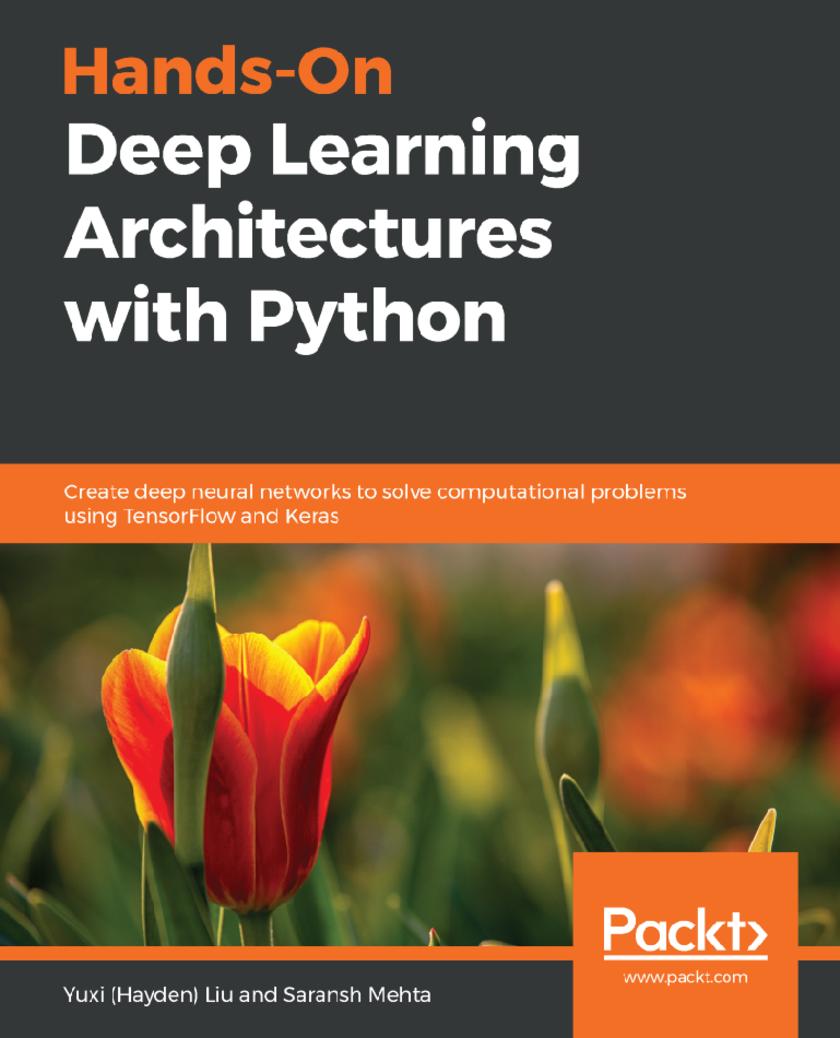
Hands-On Deep Learning Architectures with Python
¥53.40
Concepts, tools, and techniques to explore deep learning architectures and methodologies Key Features * Explore advanced deep learning architectures using various datasets and frameworks * Implement deep architectures for neural network models such as CNN, RNN, GAN, and many more * Discover design patterns and different challenges for various deep learning architectures Book Description Deep learning architectures are composed of multilevel nonlinear operations that represent high-level abstractions; this allows you to learn useful feature representations from the data. This book will help you learn and implement deep learning architectures to resolve various deep learning research problems. Hands-On Deep Learning Architectures with Python explains the essential learning algorithms used for deep and shallow architectures. Packed with practical implementations and ideas to help you build efficient artificial intelligence systems (AI), this book will help you learn how neural networks play a major role in building deep architectures. You will understand various deep learning architectures (such as AlexNet, VGG Net, GoogleNet) with easy-to-follow code and diagrams. In addition to this, the book will also guide you in building and training various deep architectures such as the Boltzmann mechanism, autoencoders, convolutional neural networks (CNNs), recurrent neural networks (RNNs), natural language processing (NLP), GAN, and more—all with practical implementations. By the end of this book, you will be able to construct deep models using popular frameworks and datasets with the required design patterns for each architecture. You will be ready to explore the potential of deep architectures in today's world. What you will learn * Implement CNNs, RNNs, and other commonly used architectures with Python * Explore architectures such as VGGNet, AlexNet, and GoogLeNet * Build deep learning architectures for AI applications such as face and image recognition, fraud detection, and many more * Understand the architectures and applications of Boltzmann machines and autoencoders with concrete examples * Master artificial intelligence and neural network concepts and apply them to your architecture * Understand deep learning architectures for mobile and embedded systems Who this book is for If you’re a data scientist, machine learning developer/engineer, or deep learning practitioner, or are curious about AI and want to upgrade your knowledge of various deep learning architectures, this book will appeal to you. You are expected to have some knowledge of statistics and machine learning algorithms to get the best out of this book

Hands-On Domain-Driven Design with .NET Core
¥70.84
Solve complex business problems by understanding users better, finding the right problem to solve, and building lean event-driven systems to give your customers what they really want Key Features * Apply DDD principles using modern tools such as EventStorming, Event Sourcing, and CQRS * Learn how DDD applies directly to various architectural styles such as REST, reactive systems, and microservices * Empower teams to work flexibly with improved services and decoupled interactions Book Description Developers across the world are rapidly adopting DDD principles to deliver powerful results when writing software that deals with complex business requirements. This book will guide you in involving business stakeholders when choosing the software you are planning to build for them. By figuring out the temporal nature of behavior-driven domain models, you will be able to build leaner, more agile, and modular systems. You’ll begin by uncovering domain complexity and learn how to capture the behavioral aspects of the domain language. You will then learn about EventStorming and advance to creating a new project in .NET Core 2.1; you’ll also and write some code to transfer your events from sticky notes to C#. The book will show you how to use aggregates to handle commands and produce events. As you progress, you’ll get to grips with Bounded Contexts, Context Map, Event Sourcing, and CQRS. After translating domain models into executable C# code, you will create a frontend for your application using Vue.js. In addition to this, you’ll learn how to refactor your code and cover event versioning and migration essentials. By the end of this DDD book, you will have gained the confidence to implement the DDD approach in your organization and be able to explore new techniques that complement what you’ve learned from the book. What you will learn * Discover and resolve domain complexity together with business stakeholders * Avoid common pitfalls when creating the domain model * Study the concept of Bounded Context and aggregate * Design and build temporal models based on behavior and not only data * Explore benefits and drawbacks of Event Sourcing * Get acquainted with CQRS and to-the-point read models with projections * Practice building one-way flow UI with Vue.js * Understand how a task-based UI conforms to DDD principles Who this book is for This book is for .NET developers who have an intermediate level understanding of C#, and for those who seek to deliver value, not just write code. Intermediate level of competence in JavaScript will be helpful to follow the UI chapters.
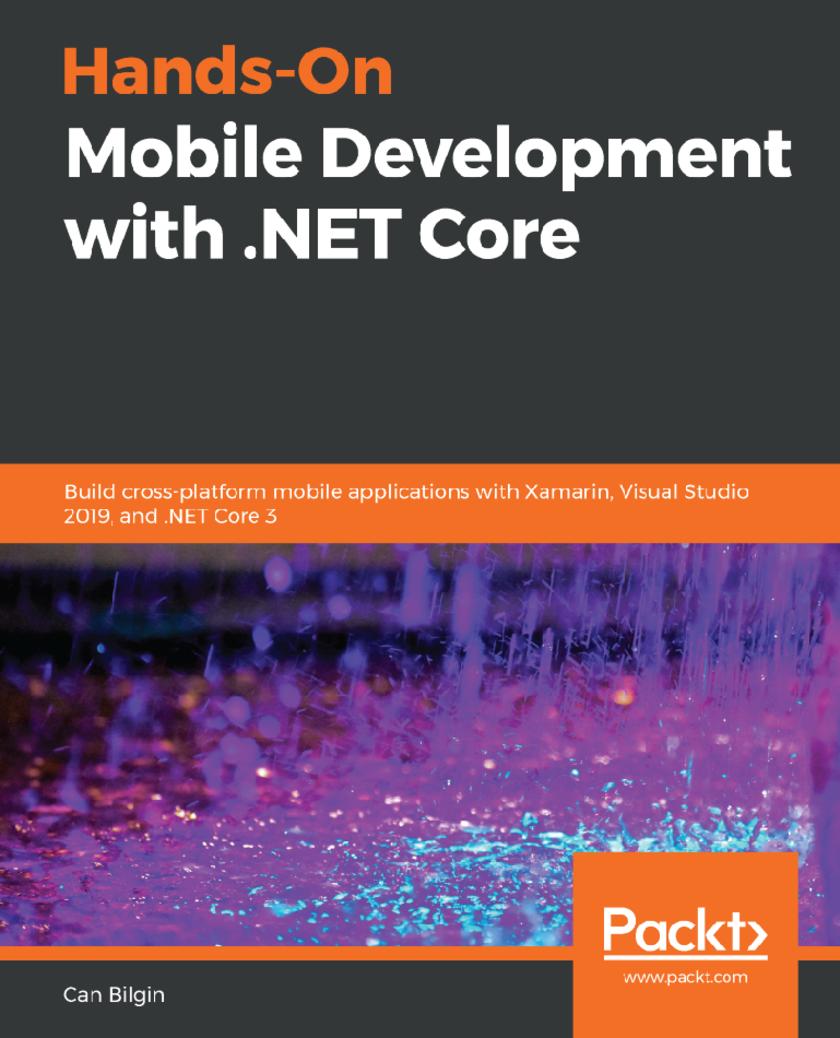
Hands-On Mobile Development with .NET Core
¥70.84
Develop native applications for multiple mobile and desktop platforms including but not limited to iOS, Android, and UWP with the Xamarin framework and Xamarin.Forms Key Features * Understand .NET Core and its cross-platform development philosophy * Build Android, iOS, and Windows mobile applications with C#, .NET Core, and Azure Cloud Services * Bring Artificial Intelligence capabilities into your mobile applications with Azure AI Book Description .NET Core is the general umbrella term used for Microsoft’s cross-platform toolset. Xamarin used for developing mobile applications, is one of the app model implementations for .NET Core infrastructure. In this book, you will learn how to design, architect, and develop highly attractive, maintainable, efficient, and robust mobile applications for multiple platforms, including iOS, Android, and UWP, with the toolset provided by Microsoft using Xamarin, .NET Core, and Azure Cloud Services. This book will take you through various phases of application development with Xamarin, from environment setup, design, and architecture to publishing, using real-world scenarios. Throughout the book, you will learn how to develop mobile apps using Xamarin, Xamarin.Forms and .NET Standard; implement a webbased backend composed of microservices with .NET Core using various Azure services including but not limited to Azure App Services, Azure Active Directory, Notification Hub, Logic Apps, and Azure Functions, Cognitive Services; create data stores using popular database technologies such as Cosmos DB, SQL and Realm. Towards the end, the book will help developers to set up an efficient and maintainable development pipeline to manage the application life cycle using Visual Studio App Center and Visual Studio Services. What you will learn * Implement native applications for multiple mobile and desktop platforms * Understand and use various Azure Services with .NET Core * Make use of architectural patterns designed for mobile and web applications * Understand the basic Cosmos DB concepts * Understand how different app models can be used to create an app service * Explore the Xamarin and Xamarin.Forms UI suite with .NET Core for building mobile applications Who this book is for This book is for mobile developers who wish to develop cross-platform mobile applications. Programming experience with C# is required. Some knowledge and understanding of core elements and cross-platform application development with .NET is required.
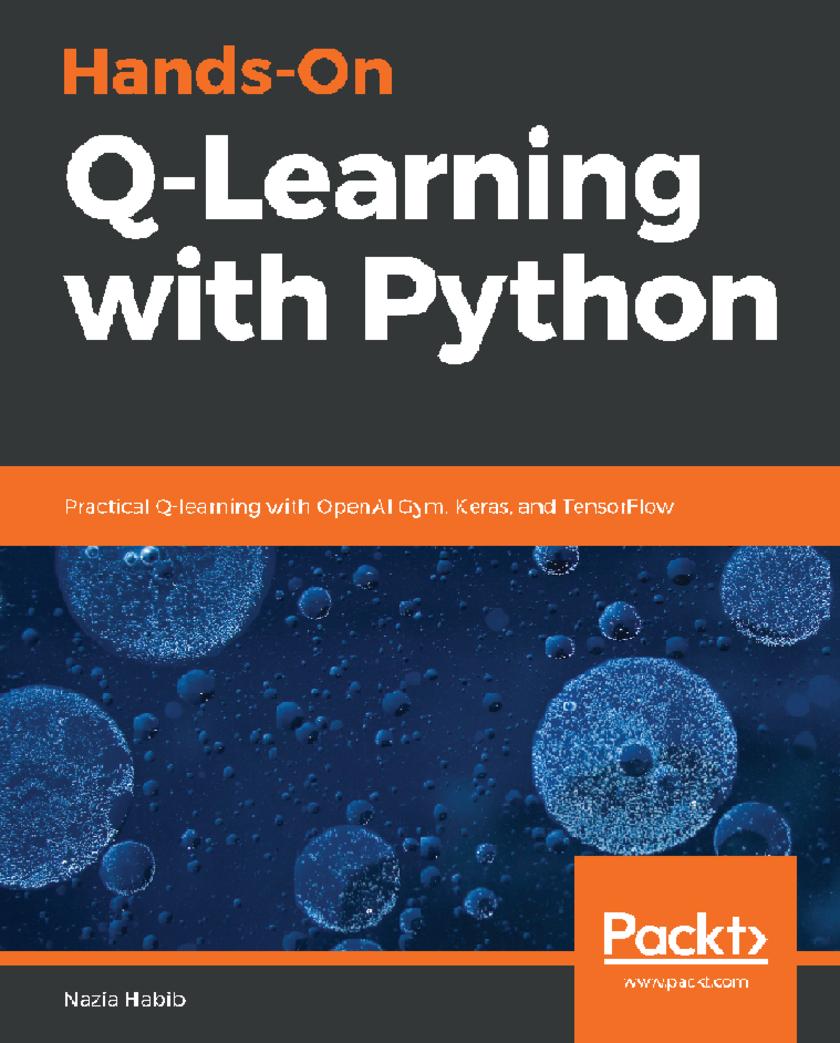
Hands-On Q-Learning with Python
¥62.12
Leverage the power of reward-based training for your deep learning models with Python Key Features * Understand Q-learning algorithms to train neural networks using Markov Decision Process (MDP) * Study practical deep reinforcement learning using Q-Networks * Explore state-based unsupervised learning for machine learning models Book Description Q-learning is a machine learning algorithm used to solve optimization problems in artificial intelligence (AI). It is one of the most popular fields of study among AI researchers. This book starts off by introducing you to reinforcement learning and Q-learning, in addition to helping you get familiar with OpenAI Gym as well as libraries such as Keras and TensorFlow. A few chapters into the book, you will gain insights into modelfree Q-learning and use deep Q-networks and double deep Q-networks to solve complex problems. This book will guide you in exploring use cases such as self-driving vehicles and OpenAI Gym’s CartPole problem. You will also learn how to tune and optimize Q-networks and their hyperparameters. As you progress, you will understand the reinforcement learning approach to solving real-world problems. You will also explore how to use Q-learning and related algorithms in real-world applications such as scientific research. Toward the end, you’ll gain a sense of what’s in store for reinforcement learning. By the end of this book, you will be equipped with the skills you need to solve reinforcement learning problems using Q-learning algorithms with OpenAI Gym, Keras, and TensorFlow. What you will learn * Explore the fundamentals of reinforcement learning and the state-action-reward process * Understand Markov decision processes * Get well versed with libraries such as Keras, and TensorFlow * Create and deploy model-free learning and deep Q-learning agents with TensorFlow, Keras, and OpenAI Gym * Choose and optimize a Q-Network’s learning parameters and fine-tune its performance * Discover real-world applications and use cases of Q-learning Who this book is for If you are a machine learning developer, engineer, or professional who wants to delve into the deep learning approach for a complex environment, then this is the book for you. Proficiency in Python programming and basic understanding of decision-making in reinforcement learning is assumed.
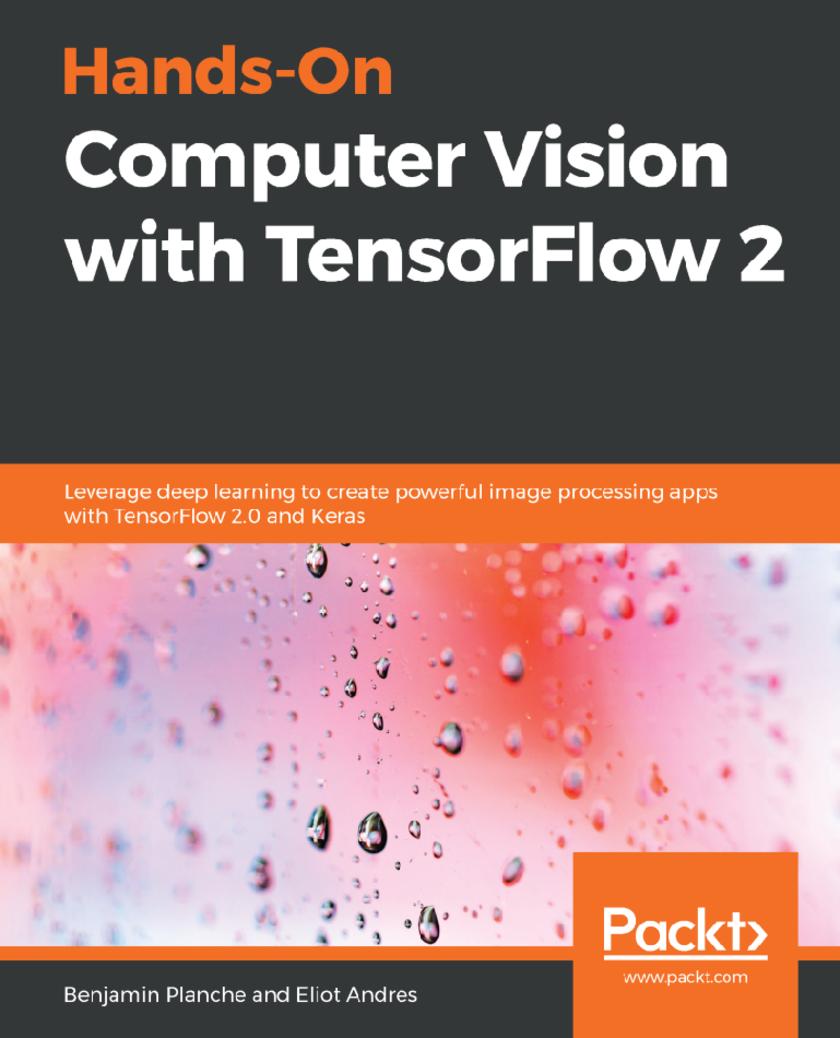
Hands-On Computer Vision with TensorFlow 2
¥62.12
A practical guide to building high performance systems for object detection, segmentation, video processing, smartphone applications, and more. This book is based on the alpha version of TensorFlow 2. Key Features * Discover how to build, train, and serve your own deep neural networks with TensorFlow 2 and Keras * Apply modern solutions to a wide range of applications such as object detection and video analysis * Learn how to run your models on mobile devices and webpages and improve their performance Book Description Computer vision solutions are becoming increasingly common, making their way in fields such as health, automobile, social media, and robotics. This book will help you explore TensorFlow 2, the brand new version of Google's open source framework for machine learning. You will understand how to benefit from using convolutional neural networks (CNNs) for visual tasks. Hands-On Computer Vision with TensorFlow 2 starts with the fundamentals of computer vision and deep learning, teaching you how to build a neural network from scratch. You will discover the features that have made TensorFlow the most widely used AI library, along with its intuitive Keras interface, and move on to building, training, and deploying CNNs efficiently. Complete with concrete code examples, the book demonstrates how to classify images with modern solutions, such as Inception and ResNet, and extract specific content using You Only Look Once (YOLO), Mask R-CNN, and U-Net. You will also build Generative Adversarial Networks (GANs) and Variational Auto-Encoders (VAEs) to create and edit images, and LSTMs to analyze videos. In the process, you will acquire advanced insights into transfer learning, data augmentation, domain adaptation, and mobile and web deployment, among other key concepts. By the end of the book, you will have both the theoretical understanding and practical skills to solve advanced computer vision problems with TensorFlow 2.0. What you will learn * Create your own neural networks from scratch * Classify images with modern architectures including Inception and ResNet * Detect and segment objects in images with YOLO, Mask R-CNN, and U-Net * Tackle problems in developing self-driving cars and facial emotion recognition systems * Boost your application’s performance with transfer learning, GANs, and domain adaptation * Use recurrent neural networks for video analysis * Optimize and deploy your networks on mobile devices and in the browser Who this book is for If you’re new to deep learning and have some background in Python programming and image processing, like reading/writing image files and editing pixels, this book is for you. Even if you’re an expert curious about the new TensorFlow 2 features, you’ll find this book useful. While some theoretical explanations require knowledge in algebra and calculus, the book covers concrete examples for learners focused on practical applications such as visual recognition for self-driving cars and smartphone apps.

OpenCV 4 for Secret Agents
¥70.84
Turn futuristic ideas about computer vision and machine learning into demonstrations that are both functional and entertaining Key Features * Build OpenCV 4 apps with Python 2 and 3 on desktops and Raspberry Pi, Java on Android, and C# in Unity * Detect, classify, recognize, and measure real-world objects in real-time * Work with images from diverse sources, including the web, research datasets, and various cameras Book Description OpenCV 4 is a collection of image processing functions and computer vision algorithms. It is open source, supports many programming languages and platforms, and is fast enough for many real-time applications. With this handy library, you’ll be able to build a variety of impressive gadgets. OpenCV 4 for Secret Agents features a broad selection of projects based on computer vision, machine learning, and several application frameworks. To enable you to build apps for diverse desktop systems and Raspberry Pi, the book supports multiple Python versions, from 2.7 to 3.7. For Android app development, the book also supports Java in Android Studio, and C# in the Unity game engine. Taking inspiration from the world of James Bond, this book will add a touch of adventure and computer vision to your daily routine. You’ll be able to protect your home and car with intelligent camera systems that analyze obstacles, people, and even cats. In addition to this, you’ll also learn how to train a search engine to praise or criticize the images that it finds, and build a mobile app that speaks to you and responds to your body language. By the end of this book, you will be equipped with the knowledge you need to advance your skills as an app developer and a computer vision specialist. What you will learn * Detect motion and recognize gestures to control a smartphone game * Detect car headlights and estimate their distance * Detect and recognize human and cat faces to trigger an alarm * Amplify motion in a real-time video to show heartbeats and breaths * Make a physics simulation that detects shapes in a real-world drawing * Build OpenCV 4 projects in Python 3 for desktops and Raspberry Pi * Develop OpenCV 4 Android applications in Android Studio and Unity Who this book is for If you are an experienced software developer who is new to computer vision or machine learning, and wants to study these topics through creative projects, then this book is for you. The book will also help existing OpenCV users who want upgrade their projects to OpenCV 4 and new versions of other libraries, languages, tools, and operating systems. General familiarity with object-oriented programming, application development, and usage of operating systems (OS), developer tools, and the command line is required.
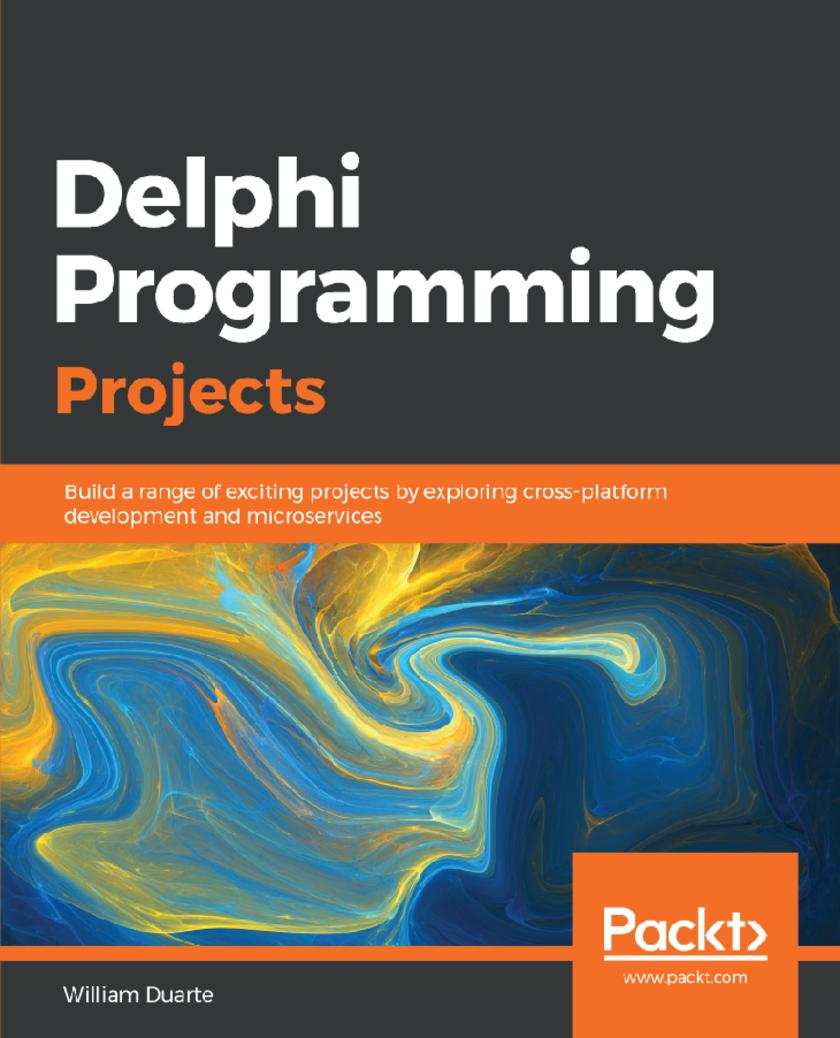
Delphi Programming Projects
¥70.84
Improve your Delphi programming skills by building robust applications for Android, iOS, and Windows platform Key Features * Build responsive user interfaces (UIs) for desktop and mobile with FireMonkey * Implement a microservices architecture using the Rapid Application Development(RAD) server * Create clones of popular applications like Instagram and Facebook using Delphi 10.3 Book Description Delphi is a cross-platform programming language and software development kit that supports rapid application development for Microsoft Windows, Apple Mac OS X, Android, and iOS. With the help of seven practical projects, this book will guide you through the best practices, Delphi Run-Time Library (RTL) resources, and design patterns. Whether you use the Visual Component Library (VCL) or FireMonkey (FMX) framework, these design patterns will be implemented in the same way in Delphi, using Object Pascal. In the first few chapters, you will explore advanced features that will help you build rich applications using the same code base for both mobile and desktop projects. In addition to this, you’ll learn how to implement microservice architecture in Delphi. As you get familiar with the various aspects of Delphi, you will no longer need to maintain source code for similar projects, program business rules on screens, or fill your forms with data access components. By the end of this book, you will have gained an understanding of the principles of clean code and become proficient in building robust and scalable applications in Delphi. What you will learn * Get to grips with the advanced features of RTL * Understand how to deal with the paradigm change between multiplatform projects * Build rich interfaces with Google's Material Design features * Understand how to implement design patterns in Delphi * Turn a mobile device into a remote controller with app tethering technology * Build a multi-database system using VCL Who this book is for This book is for developers, programmers, and IT professionals who want to learn the best market practices by implementing practical projects. Prior knowledge of the Delphi language is a must.
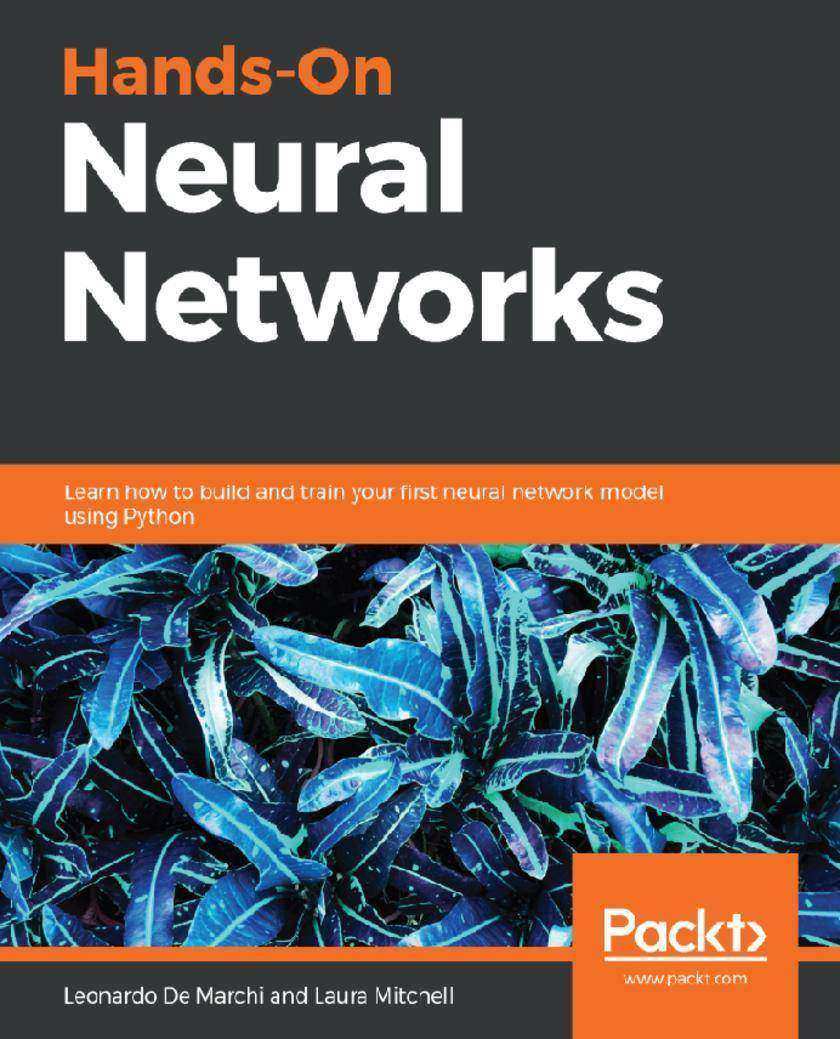
Hands-On Neural Networks
¥62.12
Design and create neural networks with deep learning and artificial intelligence principles using OpenAI Gym, TensorFlow, and Keras Key Features * Explore neural network architecture and understand how it functions * Learn algorithms to solve common problems using back propagation and perceptrons * Understand how to apply neural networks to applications with the help of useful illustrations Book Description Neural networks play a very important role in deep learning and artificial intelligence (AI), with applications in a wide variety of domains, right from medical diagnosis, to financial forecasting, and even machine diagnostics. Hands-On Neural Networks is designed to guide you through learning about neural networks in a practical way. The book will get you started by giving you a brief introduction to perceptron networks. You will then gain insights into machine learning and also understand what the future of AI could look like. Next, you will study how embeddings can be used to process textual data and the role of long short-term memory networks (LSTMs) in helping you solve common natural language processing (NLP) problems. The later chapters will demonstrate how you can implement advanced concepts including transfer learning, generative adversarial networks (GANs), autoencoders, and reinforcement learning. Finally, you can look forward to further content on the latest advancements in the field of neural networks. By the end of this book, you will have the skills you need to build, train, and optimize your own neural network model that can be used to provide predictable solutions. What you will learn * Learn how to train a network by using backpropagation * Discover how to load and transform images for use in neural networks * Study how neural networks can be applied to a varied set of applications * Solve common challenges faced in neural network development * Understand the transfer learning concept to solve tasks using Keras and Visual Geometry Group (VGG) network * Get up to speed with advanced and complex deep learning concepts like LSTMs and NLP * Explore innovative algorithms like GANs and deep reinforcement learning Who this book is for If you are interested in artificial intelligence and deep learning and want to further your skills, then this intermediate-level book is for you. Some knowledge of statistics will help you get the most out of this book.
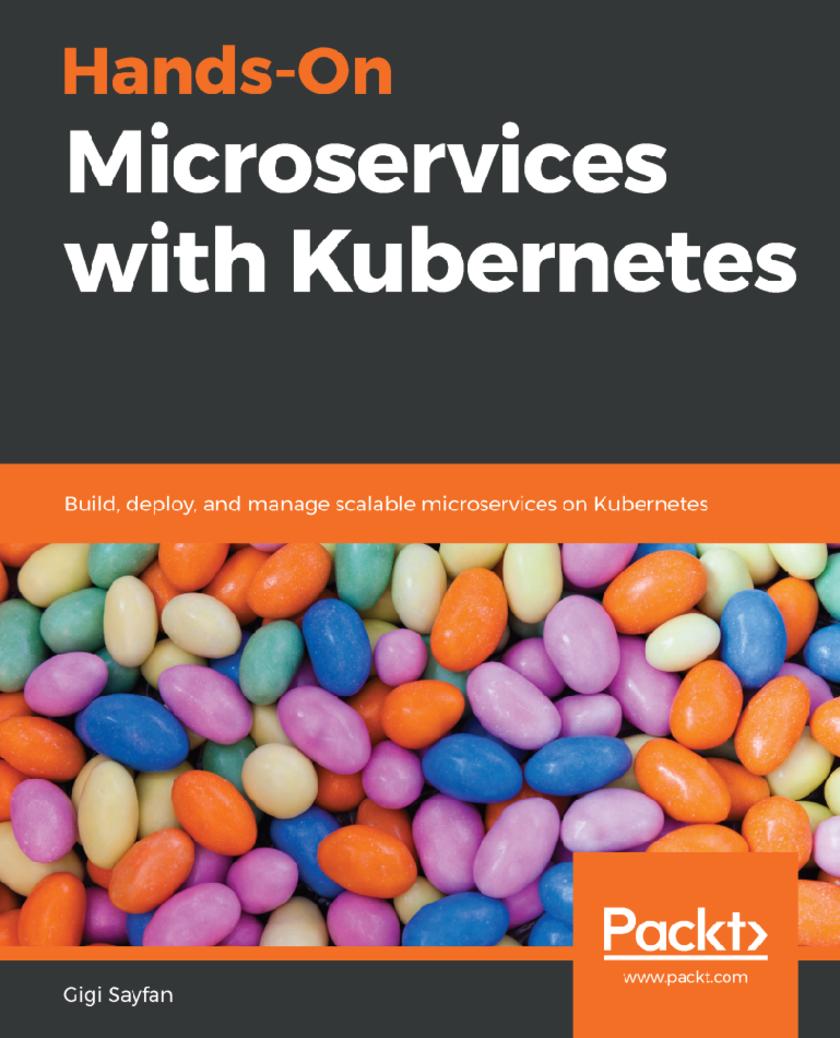
Hands-On Microservices with Kubernetes
¥70.84
Enhance your skills in building scalable infrastructure for your cloud-based applications Key Features * Learn to design a scalable architecture by building continuous integration (CI) pipelines with Kubernetes * Get an in-depth understanding of role-based access control (RBAC), continuous deployment (CD), and observability * Monitor a Kubernetes cluster with Prometheus and Grafana Book Description Kubernetes is among the most popular open-source platforms for automating the deployment, scaling, and operations of application containers across clusters of hosts, providing a container-centric infrastructure. Hands-On Microservices with Kubernetes starts by providing you with in-depth insights into the synergy between Kubernetes and microservices. You will learn how to use Delinkcious, which will serve as a live lab throughout the book to help you understand microservices and Kubernetes concepts in the context of a real-world application. Next, you will get up to speed with setting up a CI/CD pipeline and configuring microservices using Kubernetes ConfigMaps. As you cover later chapters, you will gain hands-on experience in securing microservices, and implementing REST, gRPC APIs, and a Delinkcious data store. In addition to this, you’ll explore the Nuclio project, run a serverless task on Kubernetes, and manage and implement data-intensive tests. Toward the concluding chapters, you’ll deploy microservices on Kubernetes and learn to maintain a well-monitored system. Finally, you’ll discover the importance of service meshes and how to incorporate Istio into the Delinkcious cluster. By the end of this book, you’ll have gained the skills you need to implement microservices on Kubernetes with the help of effective tools and best practices. What you will learn * Understand the synergy between Kubernetes and microservices * Create a complete CI/CD pipeline for your microservices on Kubernetes * Develop microservices on Kubernetes with the Go kit framework using best practices * Manage and monitor your system using Kubernetes and open-source tools * Expose your services through REST and gRPC APIs * Implement and deploy serverless functions as a service * Externalize authentication, authorization and traffic shaping using a service mesh * Run a Kubernetes cluster in the cloud on Google Kubernetes Engine Who this book is for This book is for developers, DevOps engineers, or anyone who wants to develop large-scale microservice-based systems on top of Kubernetes. If you are looking to use Kubernetes on live production projects or want to migrate existing systems to a modern containerized microservices system, then this book is for you. Coding skills, together with some knowledge of Docker, Kubernetes, and cloud concepts will be useful.
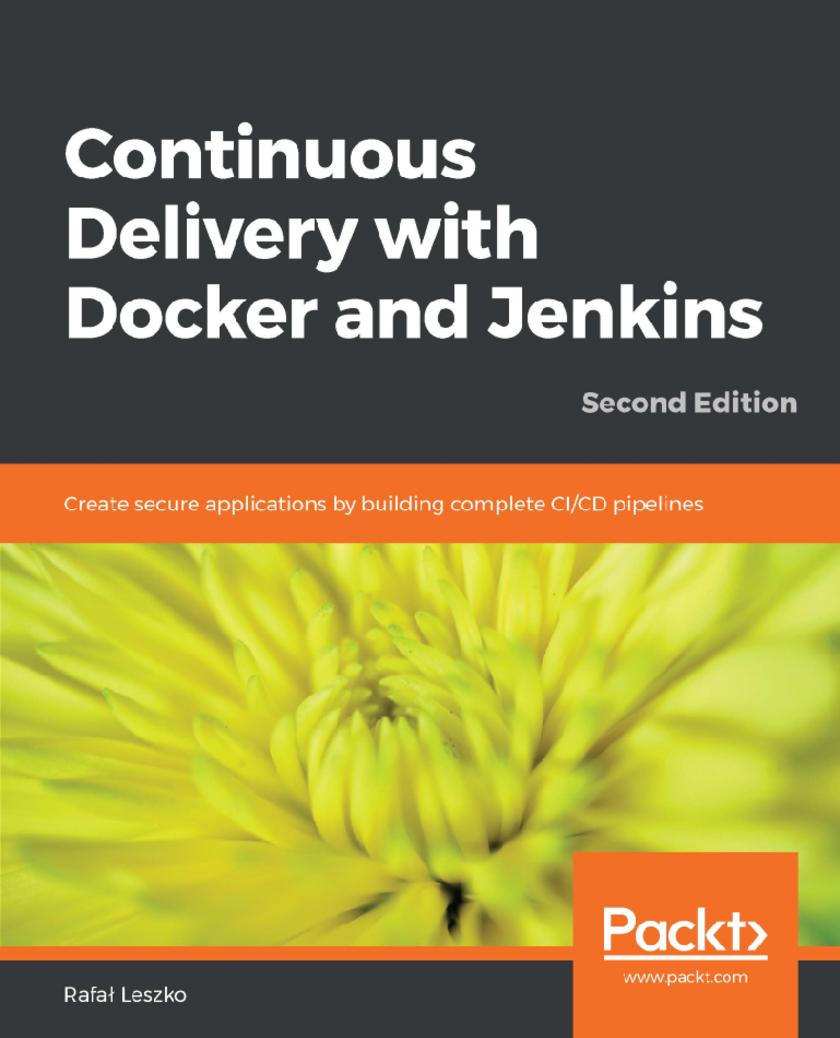
Continuous Delivery with Docker and Jenkins
¥79.56
Create a complete Continuous Delivery process using modern DevOps tools such as Docker, Kubernetes, Jenkins, Docker Hub, Ansible, GitHub and many more. Key Features * Build reliable and secure applications using Docker containers. * Create a highly available environment to scale a Docker servers using Kubernetes * Implement advance continuous delivery process by parallelizing the pipeline tasks Book Description Continuous Delivery with Docker and Jenkins, Second Edition will explain the advantages of combining Jenkins and Docker to improve the continuous integration and delivery process of an app development. It will start with setting up a Docker server and configuring Jenkins on it. It will then provide steps to build applications on Docker files and integrate them with Jenkins using continuous delivery processes such as continuous integration, automated acceptance testing, and configuration management. Moving on, you will learn how to ensure quick application deployment with Docker containers along with scaling Jenkins using Kubernetes. Next, you will get to know how to deploy applications using Docker images and testing them with Jenkins. Towards the end, the book will touch base with missing parts of the CD pipeline, which are the environments and infrastructure, application versioning, and nonfunctional testing. By the end of the book, you will be enhancing the DevOps workflow by integrating the functionalities of Docker and Jenkins. What you will learn * Get to grips with docker fundamentals and how to dockerize an application for the CD process * Learn how to use Jenkins on the Cloud environments * Scale a pool of Docker servers using Kubernetes * Create multi-container applications using Docker Compose * Write acceptance tests using Cucumber and run them in the Docker ecosystem using Jenkins * Publish a built Docker image to a Docker Registry and deploy cycles of Jenkins pipelines using community best practices Who this book is for The book targets DevOps engineers, system administrators, docker professionals or any stakeholders who would like to explore the power of working with Docker and Jenkins together. No prior knowledge of DevOps is required for this book.
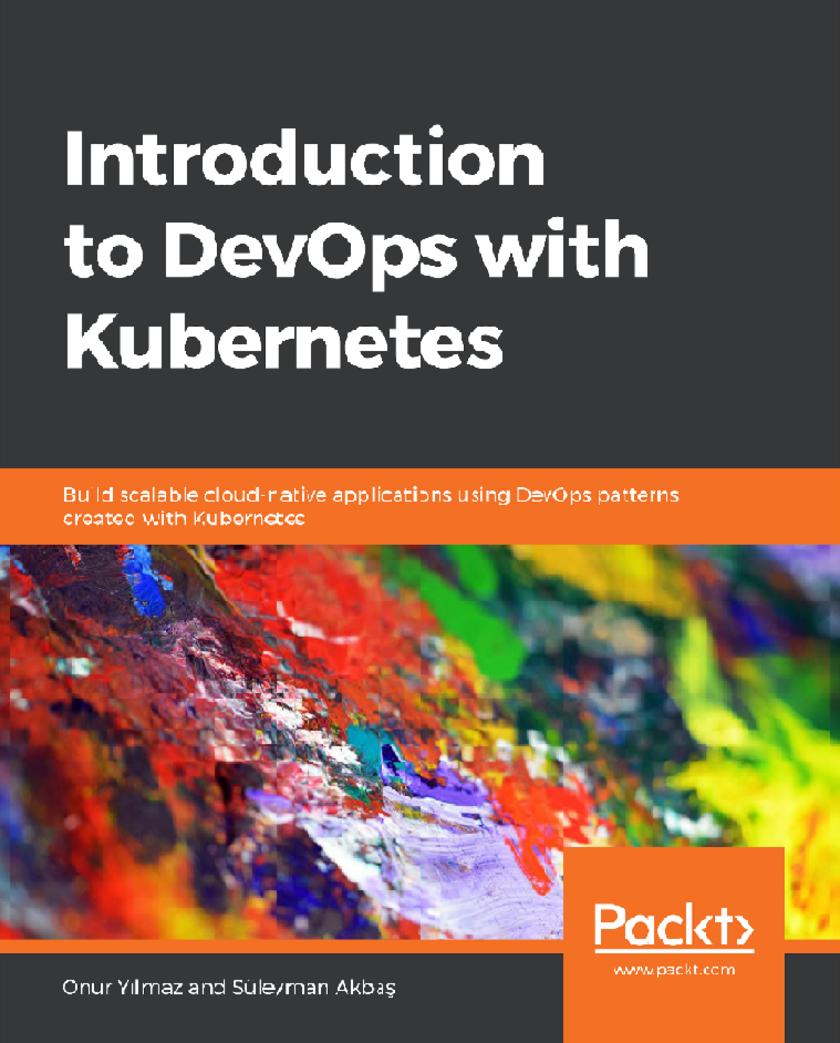
Introduction to DevOps with Kubernetes
¥70.84
Become familiar with Kubernetes and explore techniques to manage your containerized workloads and services Key Features * Learn everything from creating a cluster to monitoring applications in Kubernetes * Understand and develop DevOps primitives using Kubernetes * Use Kubernetes to solve challenging real-life DevOps problems Book Description Kubernetes and DevOps are the two pillars that can keep your business at the top by ensuring high performance of your IT infrastructure. Introduction to DevOps with Kubernetes will help you develop the skills you need to improve your DevOps with the power of Kubernetes. The book begins with an overview of Kubernetes primitives and DevOps concepts. You'll understand how Kubernetes can assist you with overcoming a wide range of real-world operation challenges. You will get to grips with creating and upgrading a cluster, and then learn how to deploy, update, and scale an application on Kubernetes. As you advance through the chapters, you’ll be able to monitor an application by setting up a pod failure alert on Prometheus. The book will also guide you in configuring Alertmanager to send alerts to the Slack channel and trace down a problem on the application using kubectl commands. By the end of this book, you’ll be able to manage the lifecycle of simple to complex applications on Kubernetes with confidence. What you will learn * Create and manage Kubernetes clusters in on-premise systems and cloud * Exercise various DevOps practices using Kubernetes * Explore configuration, secret, and storage management, and exercise these on Kubernetes * Perform different update techniques and apply them on Kubernetes * Use the built-in scaling feature in Kubernetes to scale your applications up and down * Use various troubleshooting techniques and have a monitoring system installed on Kubernetes Who this book is for If you are a developer who wants to learn how to apply DevOps patterns using Kubernetes, then this book is for you. Familiarity with Kubernetes will be useful, but not essential.
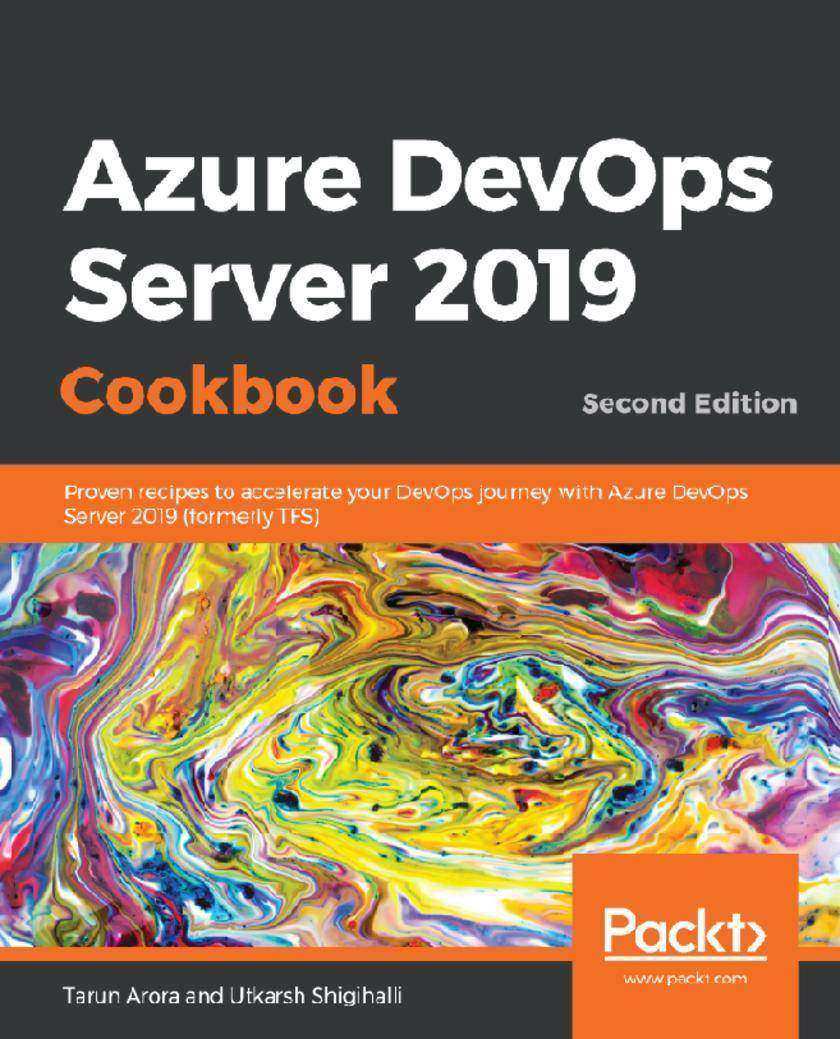
Azure DevOps Server 2019 Cookbook
¥88.28
Over 70 recipes to effectively apply DevOps best practices and implement Agile, Git, CI-CD & Test automation using Azure DevOps Server (TFS) 2019 Key Features * Learn improving code quality using pull requests, branch policies, githooks and git branching design * Accelerate the deployment of high quality software by automating build and releases using CI-CD Pipelines. * Learn tried and tested techniques to automate database deployments, App Service & Function Deployments in Azure. Book Description Azure DevOps Server, previously known as Team Foundation Server (TFS), is a comprehensive on-premise DevOps toolset with a rich ecosystem of open source plugins. This book is your one stop guide to learn how to effectively use all of these Azure DevOps services to go from zero to DevOps. You will start by building high-quality scalable software targeting .NET, .NET core or Node.js applications. You will learn techniques that will help you to set up end-to-end traceability of your code changes from design through to release. Whether you are deploying software on-premise or in the cloud in App Service, Functions, or Azure VMs, this book will help you learn release management techniques to reduce release failures. Next, you will be able to secure application configuration by using Azure KeyVault. You will also learn how to create and release extensions to the Azure DevOps marketplace and reach million developer ecosystem for feedback. The working extension samples will allow you to iterate changes in your extensions easily and release updates to the marketplace quickly. By the end of this book, techniques provided in the book will help you break down the invisible silos between your software development teams. This will transform you from being a good software development team to an elite modern cross functional software development team. What you will learn * Set up a team project for an Agile delivery team, importing requirements from Excel * Plan,track, and monitor progress using self updating boards, Sprint and Kanban boards * Unlock the features of Git by using branch policies, Git pull requests, forks, and Git hooks * Build and release .NET core, SQL and Node.js applications using Azure Pipeline * Automate testing by integrating Microsoft and open source testing frameworks * Extend Azure DevOps Server to a million developer ecosystem Who this book is for This book is for anyone looking to succeed with DevOps. The techniques in this book apply to all roles of the software development lifecycle including developers, testers, architects, configuration analysts, site reliability engineers and release managers. If you are a new user you’ll learn how to get started; if you are an experienced user you’ll learn how to launch your project into a modern and mature DevOps enabled software development team.
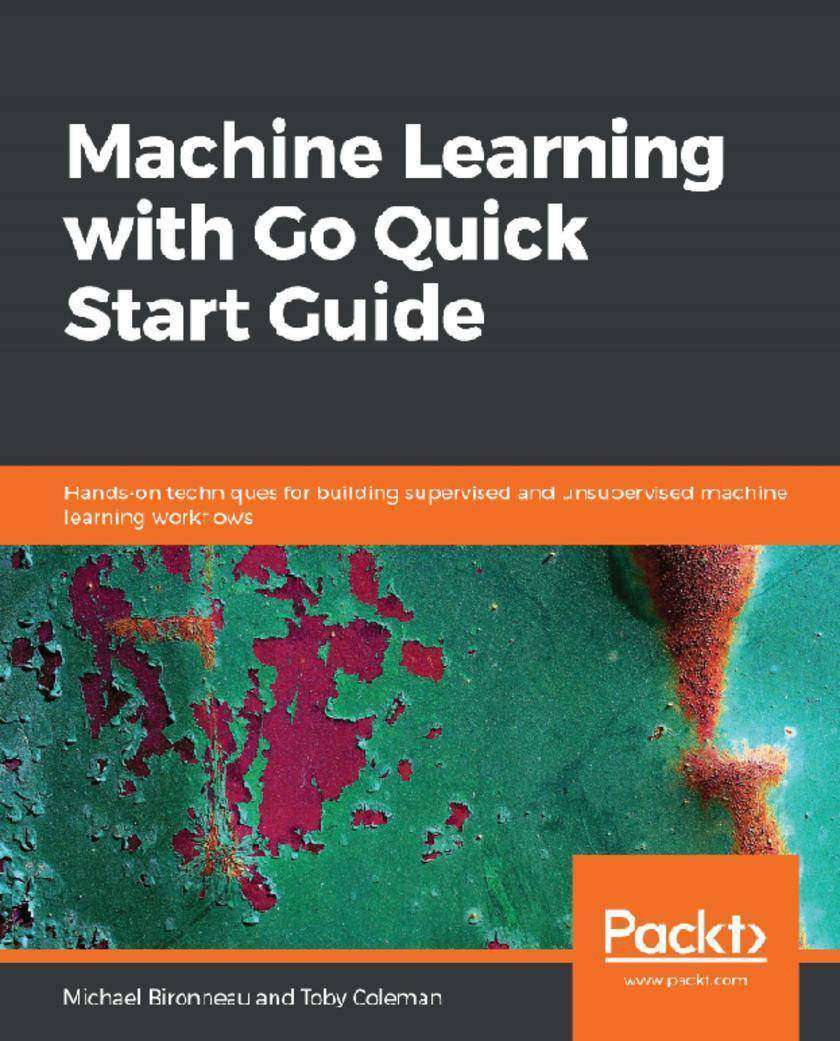
Machine Learning with Go Quick Start Guide
¥44.68
This quick start guide will bring the readers to a basic level of understanding when it comes to the Machine Learning (ML) development lifecycle, will introduce Go ML libraries and then will exemplify common ML methods such as Classification, Regression, and Clustering Key Features * Your handy guide to building machine learning workflows in Go for real-world scenarios * Build predictive models using the popular supervised and unsupervised machine learning techniques * Learn all about deployment strategies and take your ML application from prototype to production ready Book Description Machine learning is an essential part of today's data-driven world and is extensively used across industries, including financial forecasting, robotics, and web technology. This book will teach you how to efficiently develop machine learning applications in Go. The book starts with an introduction to machine learning and its development process, explaining the types of problems that it aims to solve and the solutions it offers. It then covers setting up a frictionless Go development environment, including running Go interactively with Jupyter notebooks. Finally, common data processing techniques are introduced. The book then teaches the reader about supervised and unsupervised learning techniques through worked examples that include the implementation of evaluation metrics. These worked examples make use of the prominent open-source libraries GoML and Gonum. The book also teaches readers how to load a pre-trained model and use it to make predictions. It then moves on to the operational side of running machine learning applications: deployment, Continuous Integration, and helpful advice for effective logging and monitoring. At the end of the book, readers will learn how to set up a machine learning project for success, formulating realistic success criteria and accurately translating business requirements into technical ones. What you will learn * Understand the types of problem that machine learning solves, and the various approaches * Import, pre-process, and explore data with Go to make it ready for machine learning algorithms * Visualize data with gonum/plot and Gophernotes * Diagnose common machine learning problems, such as overfitting and underfitting * Implement supervised and unsupervised learning algorithms using Go libraries * Build a simple web service around a model and use it to make predictions Who this book is for This book is for developers and data scientists with at least beginner-level knowledge of Go, and a vague idea of what types of problem Machine Learning aims to tackle. No advanced knowledge of Go (and no theoretical understanding of the math that underpins Machine Learning) is required.
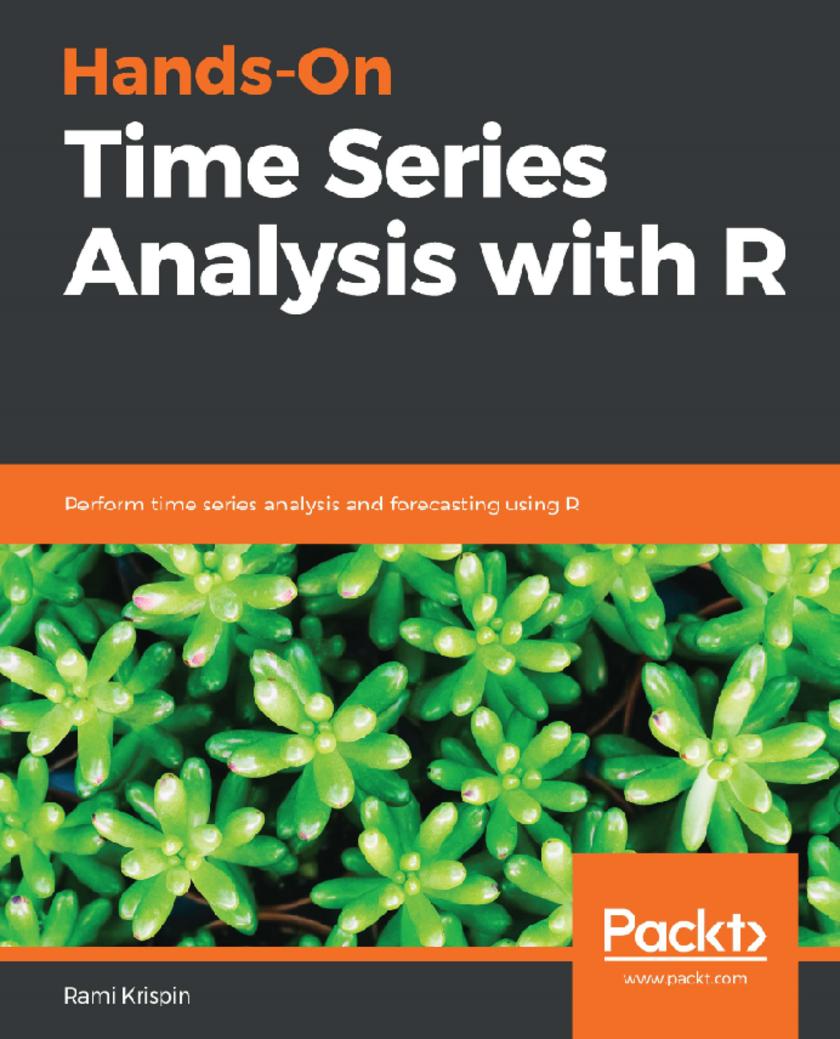
Hands-On Time Series Analysis with R
¥62.12
Build efficient forecasting models using traditional time series models and machine learning algorithms. Key Features * Perform time series analysis and forecasting using R packages such as Forecast and h2o * Develop models and find patterns to create visualizations using the TSstudio and plotly packages * Master statistics and implement time-series methods using examples mentioned Book Description Time series analysis is the art of extracting meaningful insights from, and revealing patterns in, time series data using statistical and data visualization approaches. These insights and patterns can then be utilized to explore past events and forecast future values in the series. This book explores the basics of time series analysis with R and lays the foundations you need to build forecasting models. You will learn how to preprocess raw time series data and clean and manipulate data with packages such as stats, lubridate, xts, and zoo. You will analyze data and extract meaningful information from it using both descriptive statistics and rich data visualization tools in R such as the TSstudio, plotly, and ggplot2 packages. The later section of the book delves into traditional forecasting models such as time series linear regression, exponential smoothing (Holt, Holt-Winter, and more) and Auto-Regressive Integrated Moving Average (ARIMA) models with the stats and forecast packages. You'll also cover advanced time series regression models with machine learning algorithms such as Random Forest and Gradient Boosting Machine using the h2o package. By the end of this book, you will have the skills needed to explore your data, identify patterns, and build a forecasting model using various traditional and machine learning methods. What you will learn * Visualize time series data and derive better insights * Explore auto-correlation and master statistical techniques * Use time series analysis tools from the stats, TSstudio, and forecast packages * Explore and identify seasonal and correlation patterns * Work with different time series formats in R * Explore time series models such as ARIMA, Holt-Winters, and more * Evaluate high-performance forecasting solutions Who this book is for Hands-On Time Series Analysis with R is ideal for data analysts, data scientists, and all R developers who are looking to perform time series analysis to predict outcomes effectively. A basic knowledge of statistics is required; some knowledge in R is expected, but not mandatory.




 购物车
购物车 个人中心
个人中心



